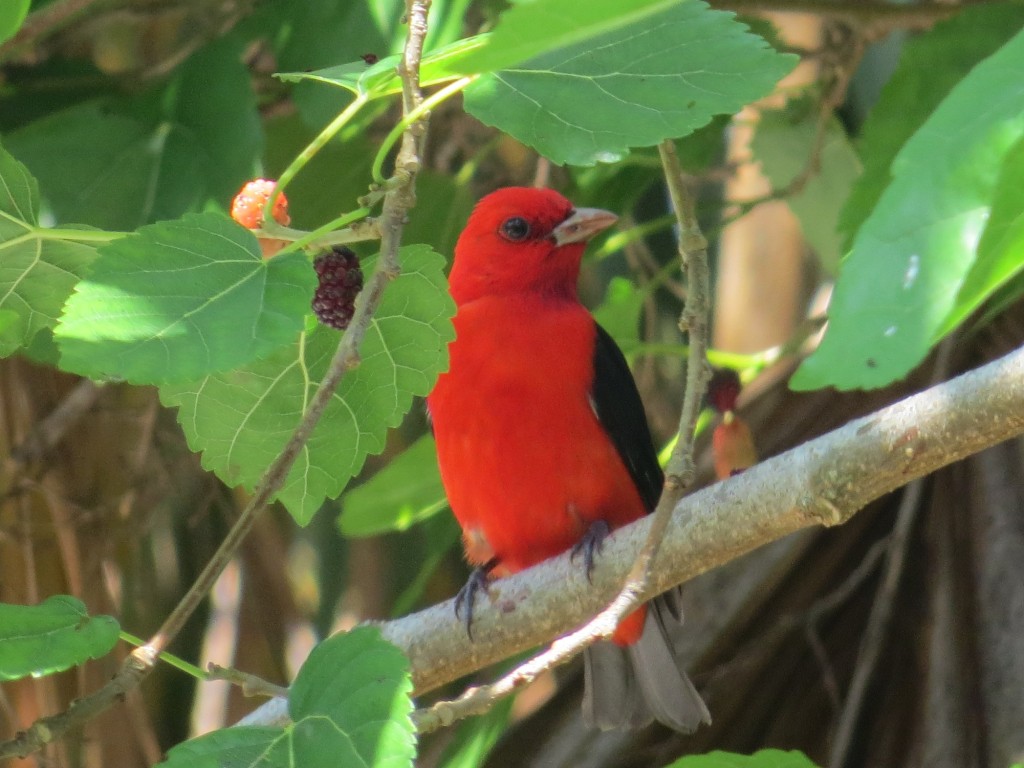
Authors: Zach Forsburg, Angela Tringali, Meredith Heather, Greg Thompson
Fall bird migration typically starts mid-August in Florida and lasts through November. During late summer and into fall, billions of birds start making their journey from their northern breeding grounds southward to where they’ll spend winter. One of the main reasons birds migrate is to move from areas of low resources to areas with high resources. Two of the main resources birds seek are food and nesting sites. Birds that nest in the north during the summer will migrate south, when the weather gets cooler and food sources decrease, to warmer areas where food is more abundant. For example, by the end of August, Swallow-Tailed Kites have usually moved on from their breeding sites in Florida to spend the winter in warmer areas in South America. The final destination depends on the species, of course.
Fall migration is typically at its peak here by September, and it’s a great time to dust off those binoculars and get outside to search for species that are only seen during migration. If you live in inland Florida, you may notice more species of warblers and flycatchers in your backyards, while those living near the coast will see more wading and shorebirds. October brings more migrating songbirds and by November, waterfowl and more shorebirds will be migrating. By December, many species of waterfowl that spend their summers in Canada and the Northern United States arrive in Florida to spend their winters, much like the human ‘snowbirds.’ If you check out the BirdCast website https://birdcast.info, you can get a daily synopsis and beautiful maps of where birds are migrating across North America. These forecast maps, produced by Colorado State University and the Cornell Lab of Ornithology, show predicted nighttime bird migration three hours after local sunset and are updated every 6 hours. On the night of Wednesday, September 22nd, 2021, a very large migration, about 512 million birds, are predicted to be flying south with many of them heading to the Gulf coast and to Florida.
Birds join the hemispheres, northern and southern, and at a time when many people are feeling isolated, can provide both a feeling of connectedness and a rewarding hobby. “Serious birders frequently travel to find specific birds and grow their life list,” notes Meredith Heather, a research assistant in Archbold’s Avian Ecology Program, “but during migration the birds come to us, and we don’t have to travel to enjoy them.”
Bird watching has long been a popular outdoor hobby. Bird watching reduces stress and can be enjoyed alone and at home. There are lots of resources available to people interested in birds. “Right now, I am using three free apps on my phone,” says Dr. Angela Tringali, assistant research biologist in Archbold’s Avian Ecology Program. “To help me identify birds I see, I use Merlin, which asks about the bird’s size, color, and activity to produce a list of likely species based on location. To identify birds I hear, I use Merlin and BirdNET. Both apps let me record sound on my phone, select and play back the song in question, and then tell me which bird it is. Between video conferencing with Greg (Thompson, Avian Ecology research assistant) and quizzing myself with these apps, I am getting better at recognizing calls. Finally, I record all the birds I identify using eBird, which submits that information to the Cornell Lab of Ornithology, where it can be shared with scientists and bird lovers across the globe.”
Find free birding apps like Merlin, BirdNET, and eBird in your phone’s app store or visit www.allaboutbirds.org to start growing your life list today!

